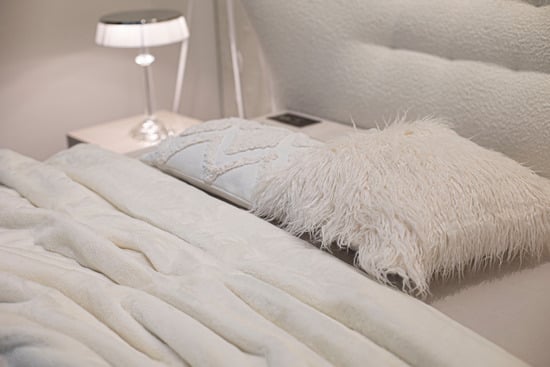Are you looking to learn how to make edible cake decorations at home? Decorating cakes with edible elements is a great way to add a personal touch to your baked creations. Whether you’re a beginner or an experienced baker, creating your own edible cake decorations can elevate the look of any dessert and impress your friends and family.
The possibilities for edible cake decorations are endless, from fondant flowers and buttercream piping to edible paints and prints. In this article, we’ll dive into the art of making edible cake decorations at home and explore various techniques and tips for creating stunning designs. You’ll learn about the essential tools and materials needed, as well as step-by-step guides for working with fondant, piping buttercream, and using edible paints and dusts.
Whether you’re preparing for a special occasion or just want to enhance your baking skills, mastering the art of edible cake decorations will take your cakes to the next level. Join us on this creative journey as we explore the world of handmade edible cake decorations and discover how you can showcase your unique designs on all your sweet treats.
Essential Tools and Materials for Making Edible Cake Decorations
When it comes to making edible cake decorations at home, having the right tools and materials is essential for success. From fondant to edible paints, here are some of the essential items you’ll need to create beautiful and delicious cake decorations.
Fondant and Gum Paste
Fondant and gum paste are versatile ingredients that can be molded into various shapes and designs. Whether you’re making flowers, bows, or 3D figurines, these pliable mediums are a must-have for any cake decorator. You can find pre-made fondant in a variety of colors at your local craft store, or you can make your own using simple ingredients like confectioners’ sugar and gelatin.
Piping Bags and Tips
For creating intricate designs with buttercream or royal icing, piping bags and tips are indispensable. Invest in a set of high-quality decorating tips in various sizes and shapes to have the flexibility to create different patterns and textures on your cakes. You can also use piping bags for filling cupcakes with frosting or ganache, giving your baked goods a professional finish.
Edible Paints and Dusts
If you want to add vibrant colors and detailed designs to your cake decorations, edible paints and dusts are a fantastic option. These food-safe products allow you to hand-paint intricate details onto fondant or gum paste creations, giving them a stunning finish. With a set of food-safe brushes and an assortment of edible colors, you can let your imagination run wild as you bring your cake decorations to life.
By ensuring that you have these essential tools and materials on hand, you’ll be well-equipped to embark on the exciting journey of creating your own edible cake decorations at home. Whether you’re a beginner or an experienced baker, having access to these items will give you the freedom to explore your creativity and hone your skills in the art of cake decorating.
The Basics of Working With Fondant
Fondant is a versatile and popular medium for creating edible cake decorations. It provides a smooth, polished look to cakes and allows for intricate designs. For those who are new to working with fondant, it’s important to understand the basics of handling and shaping this sweet confection.
One of the essential tools for working with fondant is a rolling pin, preferably one specifically designed for fondant work. This will ensure that the fondant is rolled out evenly and to the desired thickness. Additionally, a non-stick mat or surface will help prevent the fondant from sticking and tearing as it is being worked on.
To achieve the perfect texture and consistency for fondant, it’s important to knead it thoroughly before use. This will make the fondant pliable and easier to work with. When rolling out the fondant, be sure to dust your work surface with powdered sugar or cornstarch to prevent sticking.
When cutting shapes or creating decorations with fondant, precision is key. Using sharp, clean tools such as cutters or shaping tools will help create clean lines and detailed designs. For those looking to add color to their fondant creations, gel food coloring is recommended as it provides vibrant hues without altering the texture of the fondant.
Overall, mastering the basics of working with fondant is essential for creating professional-looking edible cake decorations at home.
Step-by-Step Guide
Creating fondant flowers and leaves is a popular and impressive way to decorate cakes. Whether you’re a beginner or an experienced baker, learning how to make edible cake decorations at home using fondant can take your cake decorating skills to the next level.
Choosing the Right Fondant
Before you start creating fondant flowers and leaves, it’s essential to choose the right type of fondant. While store-bought fondant is convenient, making your own marshmallow or rolled fondant at home can give you more control over the flavor and texture. Additionally, homemade fondant allows you to customize the color and consistency according to your preferences.
Making Fondant Flowers
To create beautiful fondant flowers, start by kneading the fondant until it’s pliable. Then, roll out the fondant with a rolling pin on a clean surface dusted with powdered sugar to prevent sticking. Use flower-shaped cutters or a sharp knife to cut out flower shapes from the fondant. Once you have your flower shapes, use molds and tools designed for shaping and detailing petals to add realistic textures.
Shaping Fondant Leaves
When making fondant leaves, follow similar steps as making flowers by rolling out the fondant and cutting leaf shapes with a cutter or knife. To achieve lifelike details on the leaves, use veining tools or gently press leaf veins into the surface of the fondant with a toothpick. Adding different shades of green food coloring can also enhance the natural look of your edible leaves.
By following these step-by-step guidelines for creating fondant flowers and leaves, you can easily elevate your cake decorating skills while impressing your friends and family with professional-looking homemade treats.
Mastering the Art of Piping
Buttercream decorations are a delicious and classic way to add intricate designs to your cakes. Whether you’re a beginner or an experienced baker, mastering the art of piping can take your cake decorating skills to the next level. In this section, we will explore the techniques and tips for creating beautiful buttercream decorations that will impress any guest at your next event.
One of the essential tools for working with buttercream is a piping bag and various piping tips. These tips come in different shapes and sizes, allowing you to create different textures and designs on your cake. It’s important to practice with different tips to get a feel for how each one creates different effects. You’ll also need a sturdy turntable to easily maneuver the cake as you pipe the decorations onto its surface.
To begin piping buttercream decorations, start by preparing a smooth base coat of buttercream on your cake. This will create a clean canvas for your designs and provide some stability for piping intricate decorations.
Once the base coat is set, fill your piping bag with colored buttercream and choose a piping tip that suits the design you want to create. Practice applying even pressure on the bag while keeping a steady hand as you pipe swirls, rosettes, leaves, shells, or any other shape onto your cake.
Experimenting with different techniques such as ruffles, borders, and writing can add variety to your buttercream decorations. Keep in mind that practice makes perfect when it comes to piping buttercream, so don’t be discouraged if your first attempts aren’t perfect. With patience and practice, you’ll soon be creating stunning edible cake decorations using buttercream. Overall, mastering this art comes down to patience.
Getting Creative With Edible Paints and Dusts
Are you looking to add a unique and artistic touch to your homemade cakes? Using edible paints and dusts is a great way to take your cake decorating skills to the next level. With just a few tools and a little creativity, you can create stunning painted designs that will impress your friends and family. Here’s how to make edible cake decorations at home using painting techniques.
Materials Needed
- Edible paints or dusts
- Fine paint brushes
- Cake decorating sponges
- Alcohol or clear extracts for thinning the paints
- Parchment paper or acetate sheets for practice
Techniques
Learning the right painting techniques is essential for creating beautiful edible decorations for your cakes. Here are some basic tips to get you started:
- Start with a clean, smooth surface: Before you begin painting on fondant, make sure it is free from any imperfections.
- Practice on parchment paper: It’s helpful to practice your design on parchment paper or acetate sheets before applying it to the cake.
- Thin your paints: Use alcohol or clear extracts to thin out your edible paints for a smoother application.
- Create depth with layers: Build up the colors in layers to create depth and dimension in your design.
- Add details with brushes and sponges: Use fine paint brushes and cake decorating sponges to add intricate details and textures to your design.
With these essential tools, materials, and techniques, you can elevate your cake decorating skills by adding beautiful hand-painted designs to your homemade creations. Whether you’re creating flowers, patterns, or intricate scenes, edible paint opens up endless possibilities for making truly unique and personalized cake decorations.
Using Edible Printers
Making edible images for cake decorating is a great way to personalize and add a unique touch to your baked creations. With the right tools and materials, you can easily create stunning edible images at home. Here’s a step-by-step guide on how to make edible images for cake decorating:
1. Edible Image Printer: The first thing you’ll need is an edible image printer. These specialized printers use food coloring to print images onto edible paper, also known as frosting sheets or icing sheets. Make sure to use a printer that is specifically designed for this purpose, as using a regular printer with edible ink can be harmful if not toxic.
2. Designing the Image: Once you have your printer, you’ll need to choose or create the design you want to print on your cake. This could be a photo, logo, or any other image that you want to transfer onto the cake. You can use graphic design software like Adobe Photoshop or Canva to create your own design, or simply choose an image from the internet.
3. Printing Process: Load the frosting sheet into the printer and print your chosen image onto it using the edible ink cartridges. Make sure to follow all instructions provided by the manufacturer of your edible image printer for best results.
4. Application on Cake: Once your image is printed and has had time to dry (usually just a few minutes), carefully peel it off of its backing and apply it directly onto your frosted cake. Smooth out any air bubbles or wrinkles using a clean, dry finger or tool.
By following these simple steps, you can easily create beautiful and personalized edible images for cake decorating at home without much hassle or professional help. Just remember to invest in high-quality tools and materials for best results – they make all the difference in creating stunning edible cake decorations.
Tips for Storing and Preserving Edible Cake Decorations
Storing and preserving edible cake decorations is important to ensure that they stay in perfect condition until it’s time to use them. Whether you’ve spent hours creating delicate fondant flowers or intricately piping buttercream designs, taking the right steps to store your decorations will help maintain their quality.
One of the best ways to preserve fondant decorations is by keeping them in an airtight container at room temperature. Make sure to store them away from direct sunlight or heat, as this can cause the colors to fade and the fondant to become sticky. To keep fondant flowers and leaves from becoming brittle, you can also add a small packet of silica gel or a piece of white bread into the container to help absorb any excess moisture.
When it comes to preserving buttercream decorations, it’s best to refrigerate them in an airtight container. However, be mindful of condensation when removing them from the refrigerator, as this can cause the colors to bleed and the decorations to become soft. To avoid this, allow the decorations to come to room temperature inside their container before exposing them to air.
For painted or printed edible cake decorations, it’s important to handle them with care and keep them away from any moisture or humidity. Store these decorations in a cool, dry place and shielded from light exposure whenever possible.
If you’re working with edible paints or dusts that need time to dry, make sure they are completely set before storing them. Properly storing and preserving your homemade edible cake decorations ensures they remain beautiful until it’s time for them to adorn your delicious creations.
By following these storage tips, you can ensure that your handmade edible cake decorations remain in pristine condition until you are ready to showcase them on your beautifully crafted cakes at home.
Conclusion
In conclusion, making edible cake decorations at home is a delightful and rewarding endeavor that allows you to showcase your creativity and talent. With the right tools, materials, and techniques, you can elevate your cakes to works of art that are not only visually stunning but also delicious. Whether you choose to work with fondant, buttercream, edible paints, or edible images, there are endless possibilities for expressing your personal style and adding a special touch to your baked creations.
By mastering the basics of working with fondant and buttercream, as well as exploring painting techniques and edible printing, you can create a wide variety of intricate decorations to adorn your cakes. From delicate fondant flowers to intricately piped designs, the only limit is your imagination. Furthermore, learning how to properly store and preserve your handmade decorations ensures that they remain fresh and beautiful until it’s time to enjoy them.
So why not take the leap into the world of homemade edible cake decorations? Experiment with different techniques and styles until you find what works best for you. Embrace the creative process and have fun with it – after all, there’s nothing quite like seeing a beautifully decorated cake that you’ve made from scratch. With patience, practice, and passion for baking, creating stunning edible cake decorations at home will become second nature.
Frequently Asked Questions
What Are Edible Cake Decorations Made Of?
Edible cake decorations are typically made of materials such as fondant, gum paste, modeling chocolate, or edible paper. These ingredients are safe to consume and can be shaped and colored to create various decorative elements for cakes.
How Do You Stick Edible Images Onto a Cake?
To stick edible images onto a cake, you can use a small amount of clear piping gel or edible glue on the back of the image. Gently place the image onto the desired location on the cake and smooth out any air bubbles or wrinkles using a clean, dry finger or a fondant smoother.
How to Make Cake Edible Toppers?
Making cake edible toppers involves shaping and molding edible materials such as fondant or gum paste into various designs such as flowers, figures, or other decorative shapes. These toppers can be hand-crafted or made using special molds and cutters before being placed on top of the finished cake for an attractive presentation.

I’m thrilled to be your companion on this exciting journey through the world of home decor and design. With a passion for turning houses into homes and a keen eye for the finer details, I’m here to help you transform your living spaces into beautiful, functional, and meaningful havens.





